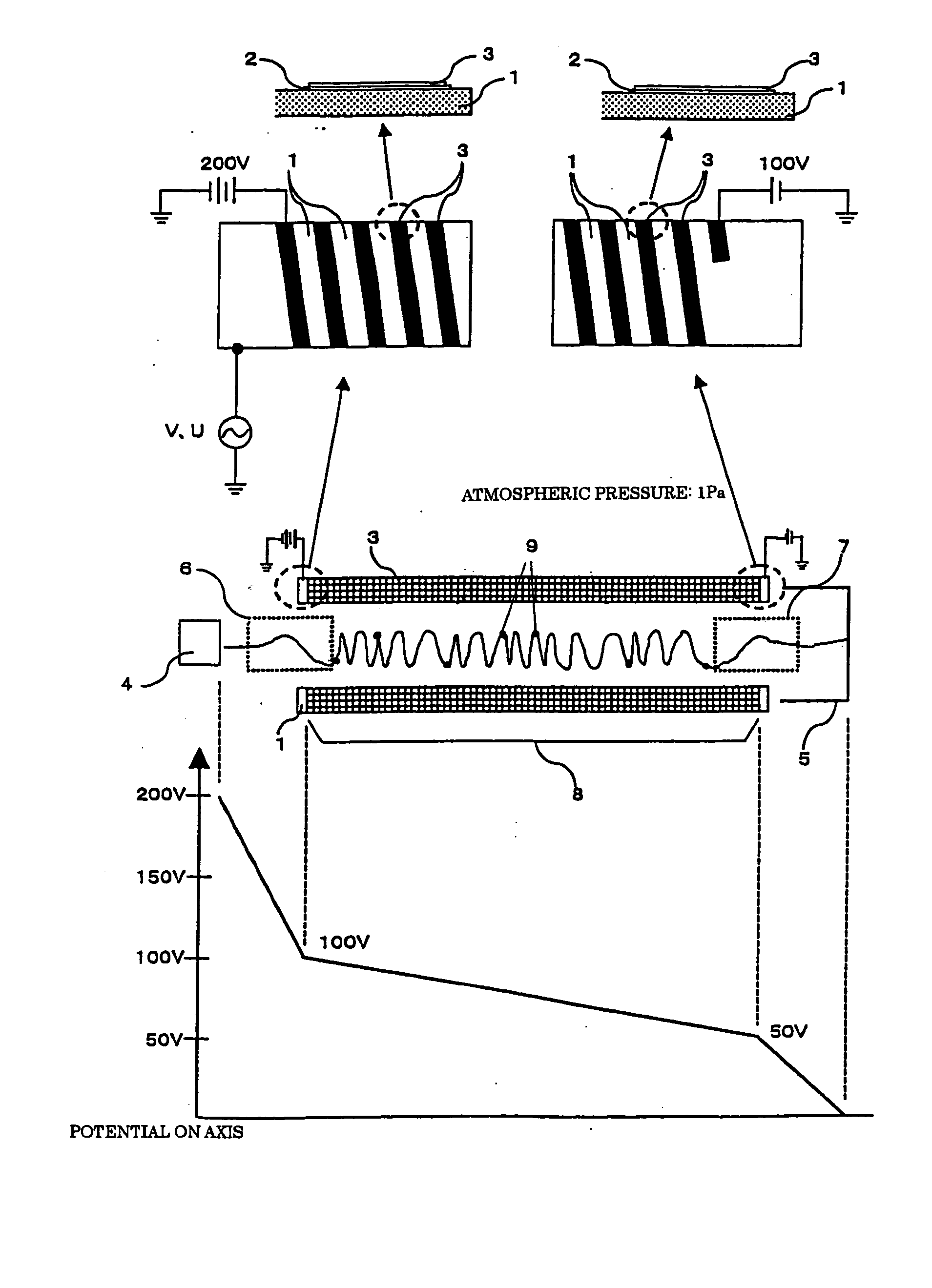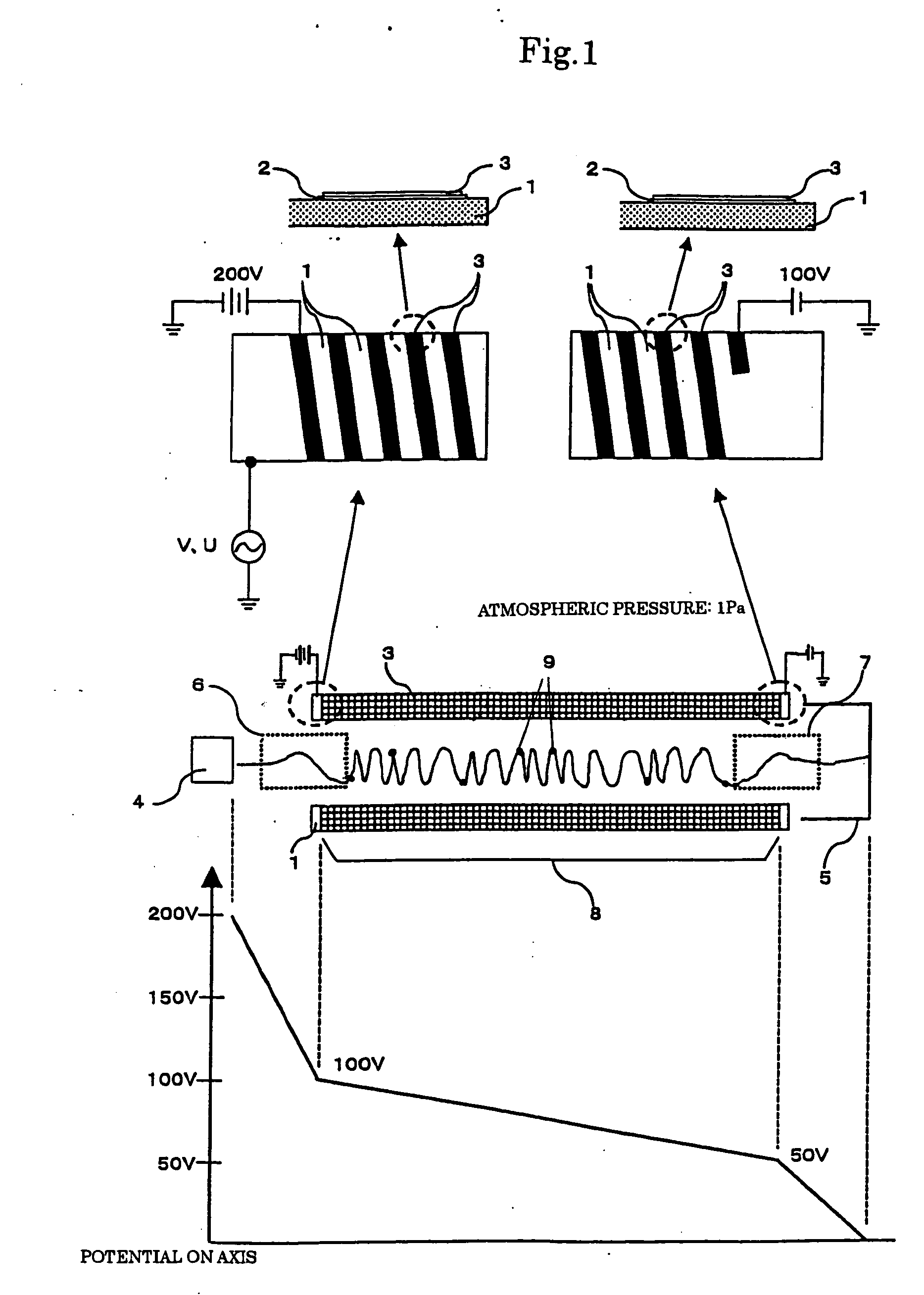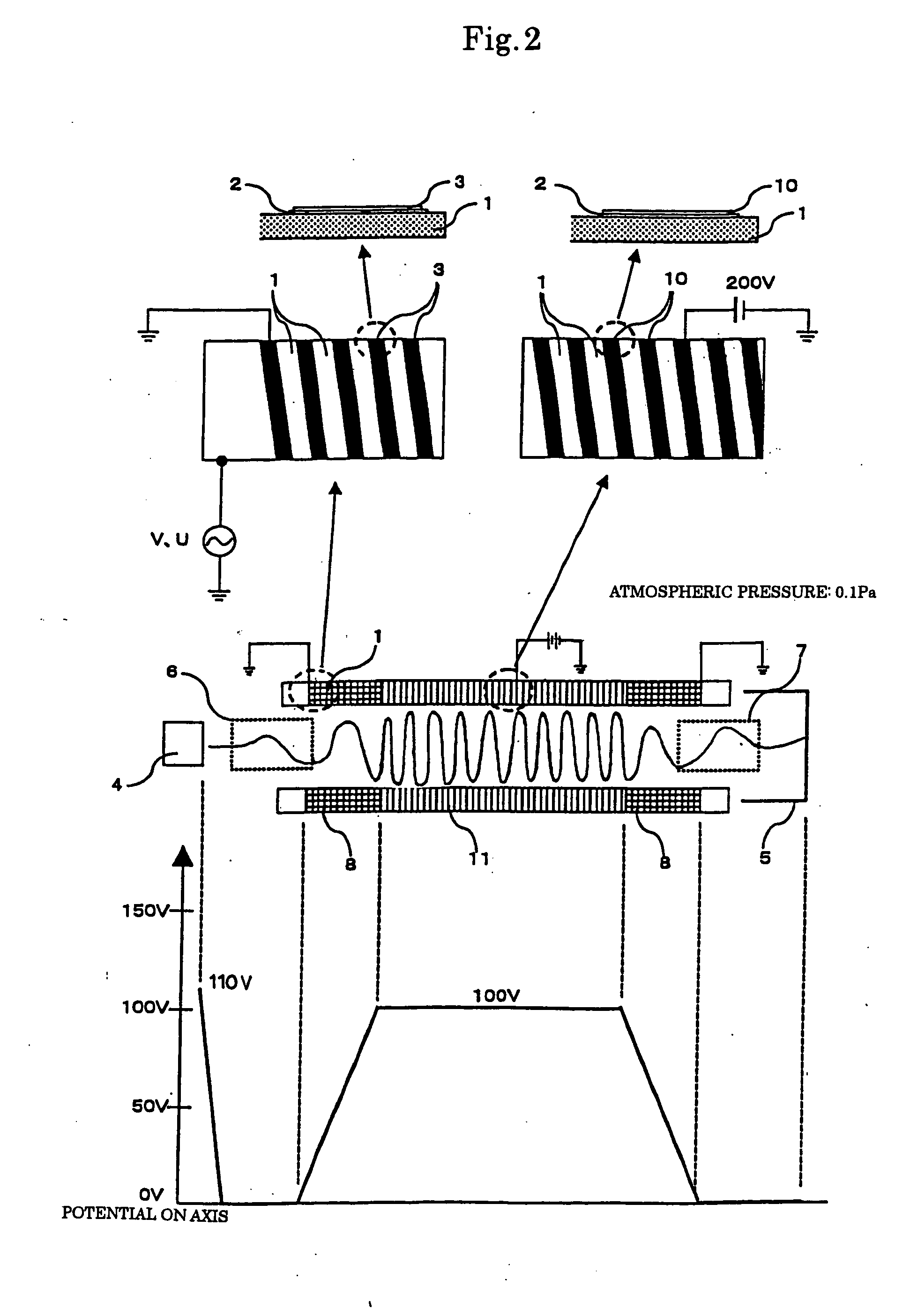Q-pole type mass spectrometer
a mass spectrometer and q-pole technology, applied in the field of mass spectrometers, can solve the problems of reducing the concentration of gas to be measured, affecting the accuracy of q-pole ions, so as to achieve the same position accuracy tremendously easily
- Summary
- Abstract
- Description
- Claims
- Application Information
AI Technical Summary
Benefits of technology
Problems solved by technology
Method used
Image
Examples
first embodiment
[0073]FIG. 1 is a schematic diagram for explaining a first embodiment of the present invention. The Q-pole type mass spectrometer which will be described in this embodiment can be actuated in a high-pressure atmosphere and is capable of measuring high-mass molecules with a high sensitivity. Control of motion of an ion to be measured in the Q-pole region in the axial direction is carried out by Coulomb force generated by an electric field formed by four Q-poles composing a Q-pole type mass spectrometer. Each Q-pole of the four Q-poles has different DC potentials at respective positions in the axial direction, while they have an equal DC potential except DC voltage U at the same position in the axial direction of each Q-pole of the four Q-poles.
[0074] The basic structure of the Q-pole type mass spectrometer of the present embodiment is the same as a conventional one, so that description thereof is omitted. The length of a Q-pole 1 can be designed 100 to 300 mm like the conventional Q...
second embodiment
[0088]FIG. 2 is a schematic diagram for explaining a second embodiment of the present invention. The Q-pole type mass spectrometer which will be described in this embodiment is capable of measuring high-mass molecules with a high sensitivity. Control of motion of ions to be measured in the Q-pole region in the axial direction is carried out by Coulomb force generated by an electric field formed by four Q-poles composing the Q-pole type mass spectrometer. Each Q-pole of the four Q-poles has different DC potentials at respective positions in the axial direction, while they have an equal DC potential except DC voltage U at the same position in the axial direction of each Q-pole of the four Q-poles.
[0089] The Q-pole type mass spectrometer of this embodiment is different from that of the first embodiment only in that a conductive thin film 10 is added to the Q-pole 1, the voltage application condition is different, and that the pressure of the atmospheric gas is less than 0.1 Pa. The ot...
third embodiment
[0098]FIG. 3(a) is a schematic diagram for explaining a third embodiment of the present invention. The Q-pole type mass spectrometer which will be described in this embodiment can be actuated in a high-pressure atmosphere and controls the motion of an ion to be measured in the Q-pole region in the axial direction by a reaction force generated by a collision between the ion to be measured and the atmospheric gas.
[0099] The Q-pole type mass spectrometer of this embodiment has the same structure as the conventional Q-pole type mass spectrometer except that the ion source 4 and the collector 5 are so constructed that gas passes through them and a carrier gas flows therein.
[0100] The pressure of the atmospheric gas as the carrier gas is about 1 Pa. The carrier gas flows in the Q-pole in the direction of ion advancement as indicated by reference numeral 14. In the Q-pole type mass spectrometer of this embodiment, the ion receives a reaction force each time it collides with the carrier g...
PUM
| Property | Measurement | Unit |
|---|---|---|
| pressure | aaaaa | aaaaa |
| length | aaaaa | aaaaa |
| length | aaaaa | aaaaa |
Abstract
Description
Claims
Application Information
 Login to View More
Login to View More - R&D
- Intellectual Property
- Life Sciences
- Materials
- Tech Scout
- Unparalleled Data Quality
- Higher Quality Content
- 60% Fewer Hallucinations
Browse by: Latest US Patents, China's latest patents, Technical Efficacy Thesaurus, Application Domain, Technology Topic, Popular Technical Reports.
© 2025 PatSnap. All rights reserved.Legal|Privacy policy|Modern Slavery Act Transparency Statement|Sitemap|About US| Contact US: help@patsnap.com



